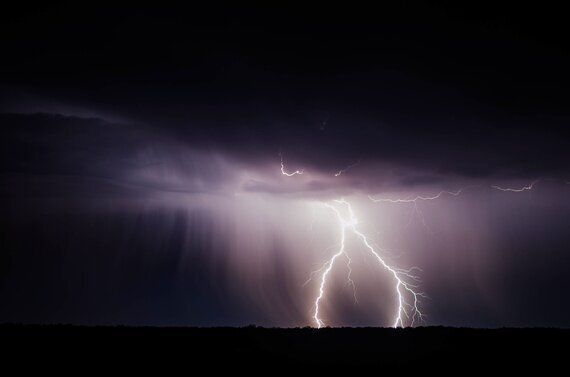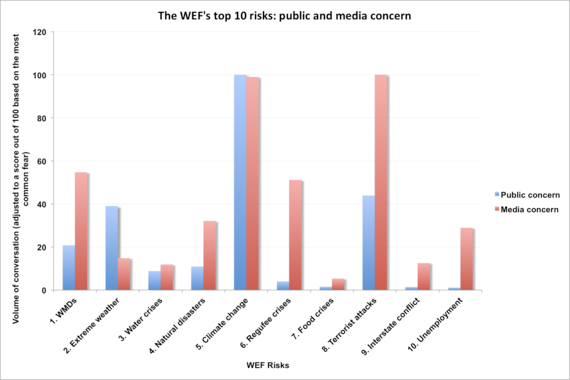
CC0 Public Domain (Source: Pexels)
"People become attached to their burdens," wrote George Bernard Shaw in 1910, "sometimes more than the burdens are attached to them." Despite more than a hundred years passing since Shaw scribed these words, their truth remains intact today.
Indeed, the past twelve months alone have provided us with an abundance of things to
be concerned about, and new data has shown that there is little consensus among the media and the public on which threats are the most pressing. From the turbulent beginnings of the UK's vote to leave the European Union, to the trigger-happy Twitter account of the Commander-in-Chief and even more conceptual issues such as climate change and cyber attacks, we are spoilt for choice as to which worries to take seriously.
The important question that we should all be asking, but which many of us will admit we haven't even considered yet, is: of all of these concerns, have we become attached to the most serious ones that affect us gravely, or just the burdens that are most talked about?
Shortly before its meeting in Davos in January 2017, the World Economic Forum released its annual Risk Report, charting the most significant threats faced by the human race. Weapons of mass destruction topped the list in terms of impact, followed by extreme weather events, water crises, natural disasters and climate change. Other threats in the top ten included refugee crises, food crises, terrorist attacks, interstate conflict and - at number ten - unemployment.
When Polecat looked at this list through the lens of our big data analytics platform, surveying all tier 1 and social media coverage, we discovered that not only do the media and public disagree on which risks are most significant, but their expressed concerns are quite different from those identified by the experts and elites at WEF.

Source: Polecat
For both the public and the media, the most pressing risk topic isn't weapons of mass destruction, but rather climate change and terrorist attacks. Despite the increasing prevalence of WMDs on the world's stage, climate change and terrorist attacks are more tangible and evident in today's society - clearly inspiring the high level of concern among the public. Climate change features as the top public worry on social media and the second highest for Tier 1 media. The reversal of climate change policy by the Trump administration may have sparked considerable worries and conversation among the global population about this topic. Terrorist attacks are the top concern for the media and the shock and horror of recent attacks in Paris, London, Stockholm and Nice doubtless keep this high on the media's agenda. In time, it may be that Donald Trump's sabre rattling with North Korea sees WMDs once again raise anxiety in our collective consciousness.
When it comes to spotting the differences between the public and the media, there is a stark contrast when we analyse another top ten risk: refugee crises. The media has covered this extensively over the past two years, with headlines often dominating the front pages of national newspapers. Despite this, public concern about the issue is less than a tenth of that of the media - suggesting that the media is simply pumping out a stronger risk message than public concern, or failing to stir a sustained response from their readers. Indeed, it may be that the scale of coverage has played a part in generating a fatigue in public responsiveness to the multitude of tragic images of displaced families, particularly at a time when concern about immigration has muddied the emotional waters and differentiation from refugees: the infamous UKIP 'Breaking Point' Brexit poster from last summer springs to mind.
In fact, the only top ten risks that attract more concern from the public than the media are climate change and extreme weather events. This suggests that these topics are either downplayed by the media, or that the public has a more heightened and visceral concern for the state of our ecosystem.
All other top ten topics attract significantly more concern from the media than the public. Indeed, several topics ascribed as significant risks by the media carry very little public concern at all. Interstate conflict and unemployment both attract 1% of the attention that climate change, as a topic, receives. This is particularly surprising, considering the intense political rhetoric surrounding both subjects in recent months.
The modern risk landscape is complex, uneven and - at times - incredibly elusive. As onlookers, and as people running the world's businesses and associations, we must do our best to understand the potential impact of world events. Digital and social channels have enabled great volumes of online conversations, and we need to understand how to cut through the noise and indeed fake news to locate the issues that really matter, while leveraging the right means of understanding the true seriousness of risks to ourselves and to our organisations and society as a whole. To use the words of George Bernard Shaw, knowing which burdens to become attached to is the first step in comprehending and navigating the ever changing and volatile world in which we all live.
